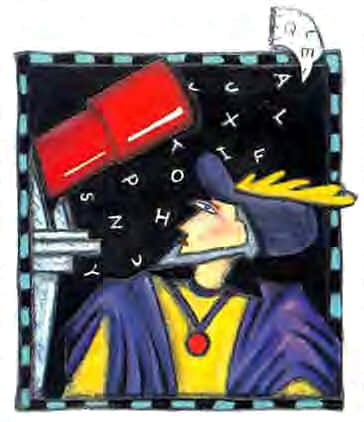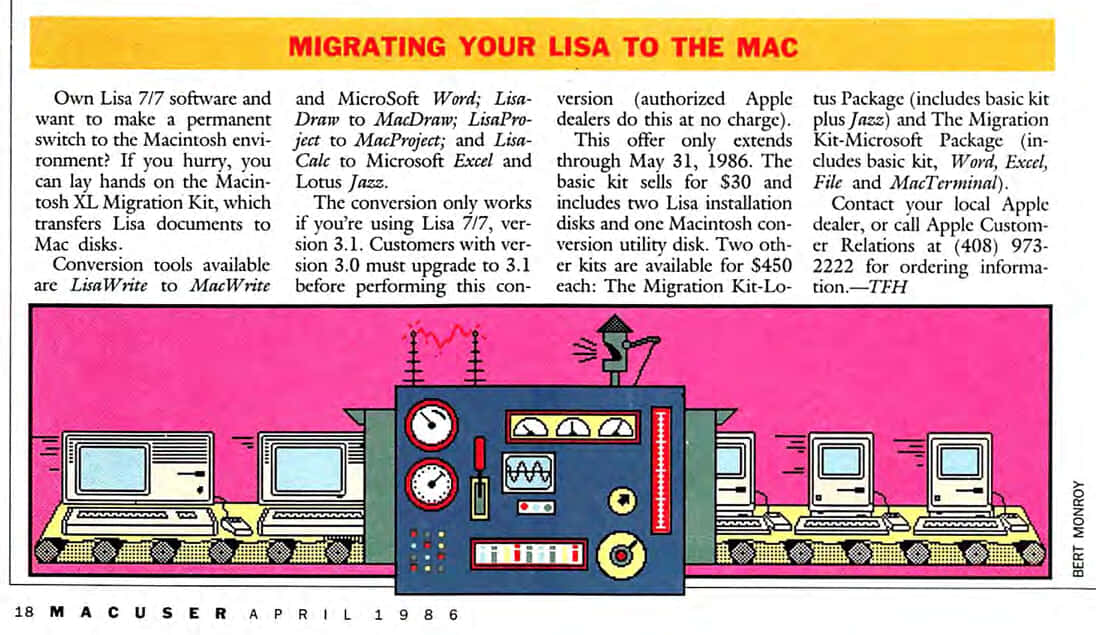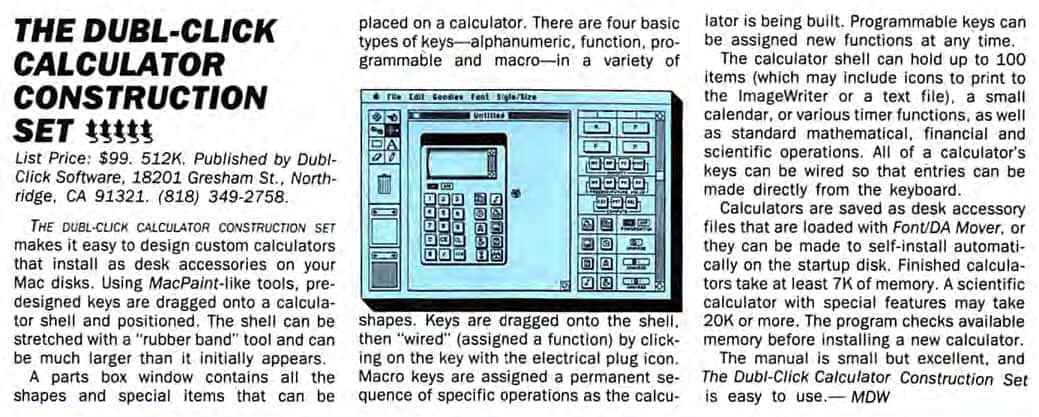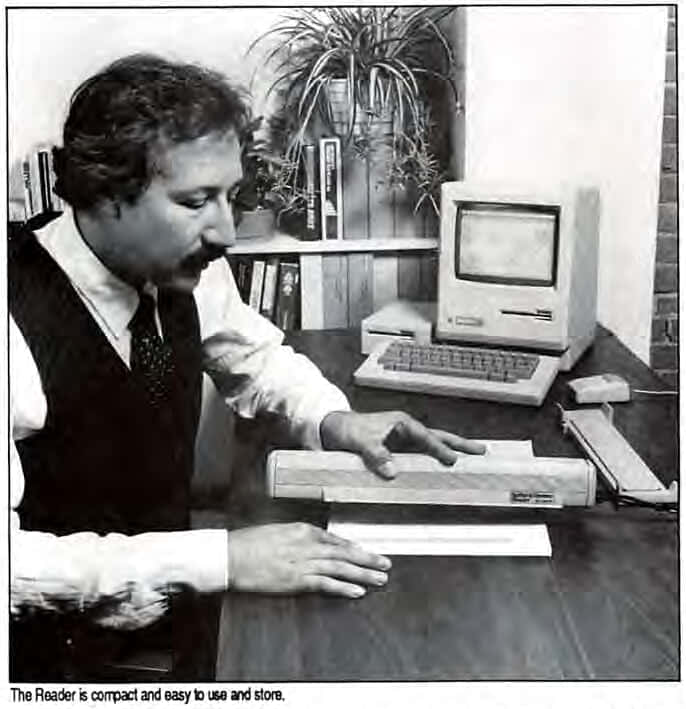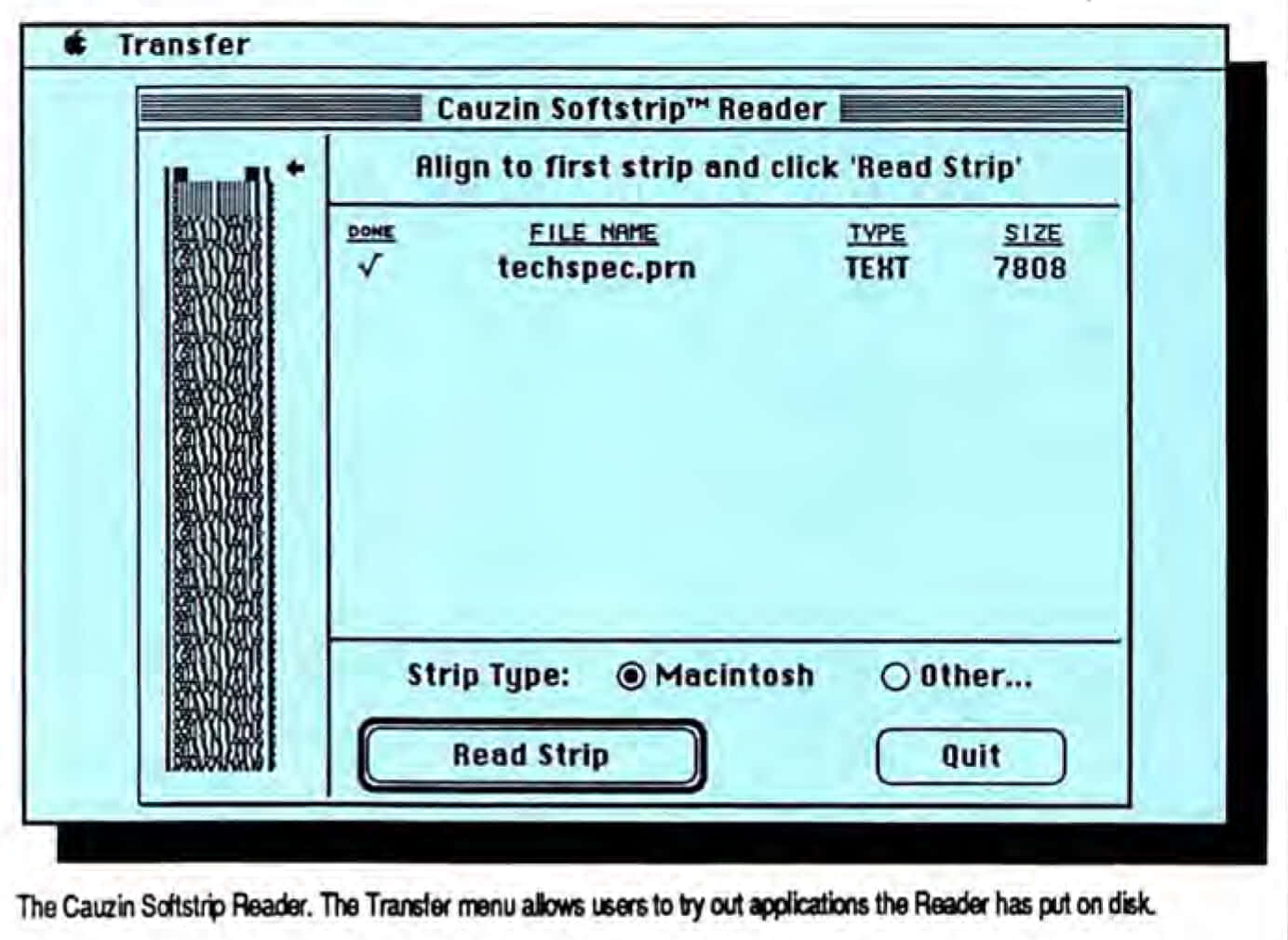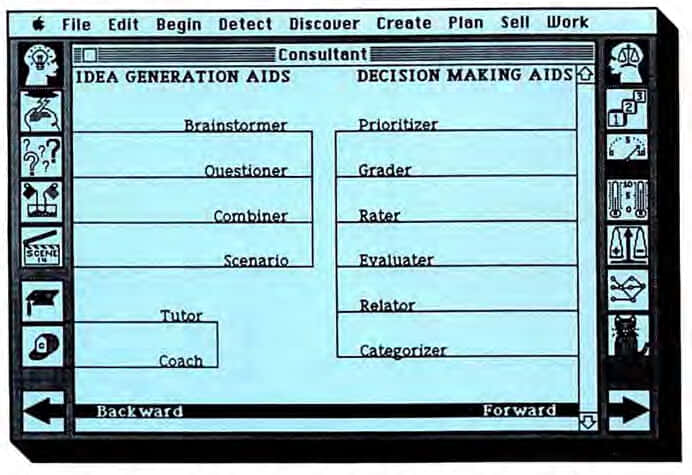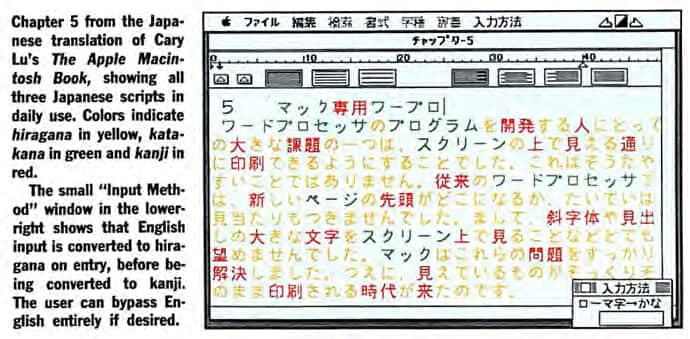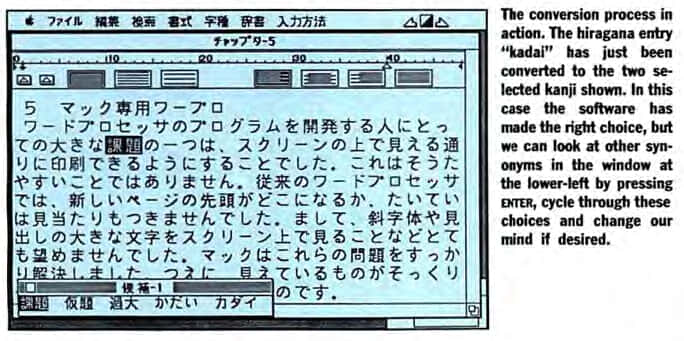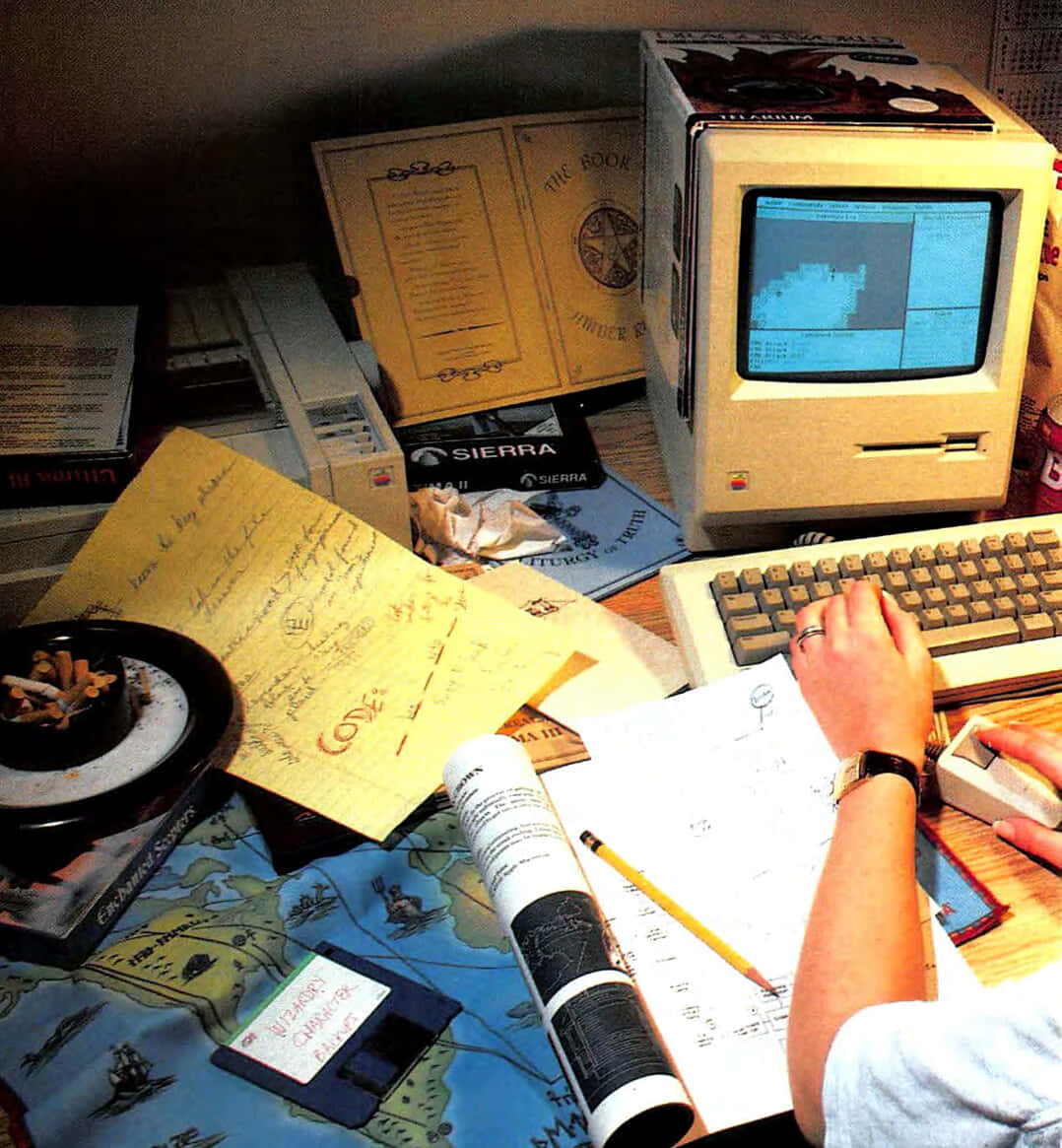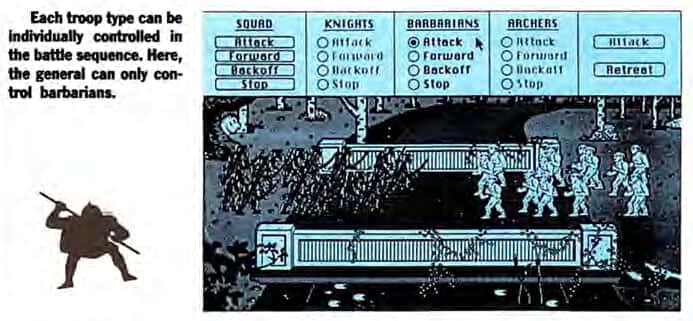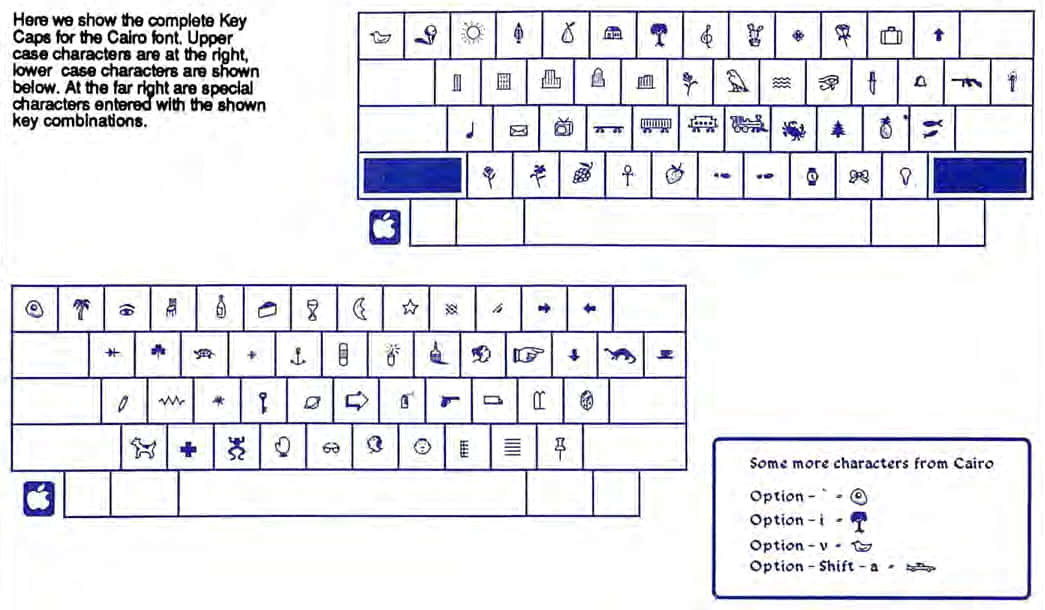Mac History 86.04 - Halley’s Comet
This month we distribute software on paper, get our creative juices flowing, write in Japanese, follow Halley’s Comet, cheat at adventure games, recreate famous battles, and build a calculator.
This is A Macintosh History: a history of the early Apple Mac told through the pages of MacUser magazine. This post is based on the April 1986 issue. New to the series? Start at the beginning with Welcome to Macintosh (Oct ‘85).
April 1986
Pick up your copy of MacUser April 1986 from the Internet Archive. Download 68K Mac software from Macintosh Garden and Macintosh Repository.
Comet LaserWriter
This month’s editorial (page 9) sees Neil Shapiro thinking about the coming communications revolution.
In some ways the LaserWriter was the Halley’s Comet of computing in 1985. A lot of fanfare followed by product introduction, and the product seemed somehow fuzzy, unfocused and perhaps overshadowed by other events. But still, there was the glow of history about it.
I’m a believer in the theory that communications shapes history; that many of a society’s most all-encompassing features are directly influenced, developed from and changed by that society’s abilities to have its people be in touch with one another. It’s a theory that’s hard to disagree with.
With the advent of the Macintosh we had the first computer capable of being used by the butcher, the baker, the bookie and the outside agitator. With the advent of the LaserWriter we are about to see how such people will be able to put their own thoughts, feelings, ideas and broadsides into print.
Because sooner or later a laser printer like the LaserWriter will not cost as much as a small car. What will happen when you can buy a laser printer for less than four hundred dollars? I think it will revolutionize many aspects of the world we live in. Perhaps even literally.
More LaserWriter coverage: Printing the Light Fantastic (Jan ‘86), The LaserWriter Revealed (Feb ‘86), and Plus the LaserWriter Plus (Mar ‘86).
Migrating Your Lisa to the Mac
There’s news about Apple’s migration kit for Lisa users on page 18:
Own Lisa 7/7 software and want to make a permanent switch to the Macintosh environment? If you hurry, you can lay hands on the Macintosh XL Migration Kit, which transfers Lisa documents to Mac disks.
See also: Do it for less with a $799 Lisa (Feb ‘87).
The Dubl-Click Calculator Construction Set
Why settle for the standard calculator when you can build your own (page 33)?
The Dubl-Click Calculator Construction Set makes it easy to design custom calculators that install as desk accessories on your Mac disks. Using MacPaint-like tools, predesigned keys are dragged onto a calculator shell and positioned.
Calculators are saved as desk accessory files that are loaded with Font/DA Mover, or they can be made to self-install automatically on the startup disk. Finished calculators take at least 7K of memory. A scientific calculator with special features may take 20K or more.
Chris Espinosa developed the original Macintosh calculator as recounted in Calculator Construction Set (folklore.org):
We all gathered around as Chris showed the calculator to Steve and then held his breath, waiting for Steve’s reaction. “Well, it’s a start”, Steve said, “but basically, it stinks. The background color is too dark, some lines are the wrong thickness, and the buttons are too big.” Chris told Steve he’ll keep changing it, until Steve thought he got it right.
You can read an interview with Chris Epinosa as part of Stanford’s Making the Macintosh: Technology and Culture in Silicon Valley.
The Software Strip
Cauzin Systems has created a simple method for printing data on paper. But will it spark a revolution (page 42)?
Softstrips encode 8-bit ASCII data (common, ordinary everyday stuff; all Mac programs can be translated into this code) into machine-readable form.
Low-density strips can store up (to) 500 bytes in a standard 9.5-inch strip medium-density allows up to approximately 3400 bytes per strip and high-density contains about 5500 bytes per strip.
The real heart of the system, at least as far as the end user is concerned, is the strip reader itself… It is powered by a small external transformer and connects to the Mac’s serial modem port.
The data that the reader collects is sent the the Mac in 4800-baud bursts, although the average data transfer or throughput rate is between 1000 and 1500 baud, depending on strip density and length. A full 9.5-inch, high-density strip takes about 30 seconds to read.
There is a chicken and egg effect in progress. Publishers are reluctant to provide their software and data in Softstrip form since there aren’t enough readers in users’ hands “to make it worthwhile (or cost effective or whatever).” Reader sales have been slow because there’s little to read.
The Softstrip system has the potential to revolutionize how we receive, and in fact use, data. It can, as a side benefit, or possibly as its major benefit, trigger an outpouring of new software, much as occurred when disks were first introduced to the microcomputer world. The technology is in place now and it merely remains for it to become widespread. One morning you may wake to discover that yet another revolution has occurred.
There’s a double-page SoftStrip advert on page 6 of this issue.
For a recent look at this forgotten technology, there’s an open-access paper in Archival Science: Decoding the Cauzin Softstrip: a case study in extracting information from old media.
Consultant
Can Consultant help you solve problems and be more creative (page 54)?
Now there’s a program that uses simple artificial intelligence (AI) techniques to help start the creative juices. ods/Consultant is a problem solving program that can stimulate new ideas. It was designed to provoke creative as well as critical thinking faculties, and after accomplishing those feats, it then helps refine the solutions to a problem so they can be easily and effectively presented to others. That’s a lot for any program to claim. Yet many people feel that Consultant does exactly what it claims to do.
Unlike most programs that non judgmentally catalogue information, Consultant encourages the user to hone in on specifics. With it users can confront the trees without losing sight of the forest. Problem solving should not be a chore. It should exercise minds and challenge abilities. Consultant will not answer your questions. But it can inspire you to make the most of your problem-solving capabilities.
Japanese To Go
A new word processor brings Japanese support to the Macintosh (page 60).
Until 6 years ago, word processing was an unknown concept in Japan. Even the idea of a Japanese typewriter was unknown. The reason is the complexity of the Japanese language. It is only with the advent of the microprocessor and recent advances in the software sciences that the Japanese have become able, on a personal basis, to access their own language in any sort of automated form.
Enter ErgoSoft. The company offers two products that allow the Japanese to use their own language in conversing with the Mac. This is a first for Macintosh, and a necessity if the Mac is to survive in the tough Japanese marketplace. One of the two products, EgWord, is a word processor that bears a resemblance to MacWrite. The other, EgBridge, extends the Japanese text-entry capabilities of EgWord to major applications such as MacPaint, MacDraw, and the entire Microsoft software family.
The first problem that causes Japanese word-processor designers to go prematurely gray is this: With up to 3,000 characters and three writing scripts in daily use, how do you input text?
The basic idea is that either kana or the English alphabet can be used to enter the phonetic representation of the text - to enter what the text sounds like. On command, the word processing software then consults a dictionary of kana-to-kanji translations and replaces the entered phonetic script on the screen with a “best guess” as to what kanji the user intended to use.
The visual characteristics of the Japanese language also push the capabilities of most micros, but the Mac is nothing if not a superb graphics machine and is easily up to the challenge. Kanji are written in a series of strokes and can become visually quite complex, requiring a fair degree of screen resolution so that the finer details of the characters are not lost. ErgoSoft draws its kanji in a 16-by-16 pixel matrix, which provides a pleasing visual screen appearance.
As of 2021, EgWord is still being developed for macOS by Monokakido. Japanese speakers can learn more from the Wikipedia entry EGWORD.
The Star-Struck Mac
Beginning on page 78, MacUser reviews four astronomy programs for the Mac: Astronomy, MacStronomy, Comet Halley, and TellStar.
Microcomputers have long had a respected place in astronomy, from controlling telescopes for advanced amateurs to flying digital duty on the Space Shuttle. As far back as 1976, some adventurous NASA programmers were exploring ways to use kit-built micros to help interpret data from satellites such as LANDSAT.
Astronomy provides an unusual perspective on the solar system and can zoom around the sky; but beyond this there is little more to it. Its slowness and lack of other basic capabilities make it more of a demonstration program than a utility.
MacStronomy goes much further, containing many features useful and even educational to novice observers and students getting their first exposure to the field of astronomy. Particularly interesting is the expandable database, which allows for customized sky displays.
Great Wave’s Comet Halley is a real aid to anyone hunting the great comet for themselves, even when used alongside the wealth of Halley books and magazines. No other program presents as much information and detail on Halley as this one.
Finally, overall, TellStar stands as the best of the lot for general observing use, by providing a set of routines of real utility as well as versatile and revealing sky plots. It has the best manual of all the programs.
Will you (or your descendants) be using a Mac when Halley returns in 2061?
The Cheat Sheet
Tracie Forman Hines loves adventure games, but sometimes even Tracie cheats! Uncover the truth on page 86.
I’ve solved them all - Wizardry’s evil wizard cringes at the sight of me. Ultima’s Lord British seems to like me even though I always clean out his treasure room. My certificate of completion for Deja Vu: A Nightmare Comes True’s “Ace Harding School of Detectives” hangs in a place of honor above my desk. Single-minded? Maybe. Crazy? Absolutely. How do I do it? It’s easy. I cheat.
The Mac offers a feature not found on other gaming microcomputers… It’s called a lockable disk. When the little tab on a Mac disk is set to the up position, that disk can still perform as usual-except, of course, that it can’t alter the existing files in any way. With games like Rogue, which immediately tally a player’s death by erasing the game file, it’s a great way to preserve a particularly good game.
Infocom, creator of a number of classic text adventures (Zork, Starcross, Hitchhikers Guide to the Galaxy) also markets the world’s classiest hint booklets for its entire line of games. Called Invisiclues, each pamphlet consists of pages of questions, each followed by several blank spaces. Players who get stuck before they can enter a palace might look up the answer to “What do I give the troll to let me pass?” under the Palace section. Then, they pass an enclosed developing marker over the blank space under the question to be given a general clue. The second clue is more specific, and the third gives the outright answer.
Read the rest of the article for more tips, or try the online version of InvisiClues for Zork I in the Internet Archive.
See also: Novels of the Mind (Dec ‘85), Deja Vu: A Nightmare Comes True (Jan ‘86), and Infocom Sold to Activision (Jul ‘86).
The Ancient Art of War
The first real-time strategy game? Decide for yourself on page 94.
War and love are mankind’s greatest passions. While there’s no computer game yet invented which can simulate the art of love, Broderbund’s The Ancient Art of War is a realistic enough simulation of war to satisfy most people’s combat urgings.
Though the game is not perfect, it does allow armchair generals to try their hands at both strategic and tactical levels. Some superb graphics and animation techniques make the on-screen happenings far more believable and personally involving than the hex-grided fields and silhouetted symbols normally associated with computer wargaming. The disk arrives with 11 scenarios that simulate battles which could have taken place in settings from the Old West to ancient China.
Well, as I did almost naming else for two weeks than play the included scenarios, I reached a point where I could win all of the battles on the disk. I then began to experiment with the “Game Generator” part of the program. I quickly realized that this part of the program could make The Ancient Art of War that rarest of disks - the type that you keep booting year after year.
Neil Shapiro goes on to explain how he creates a scenario for the Battle of Flodden Field (Wikipedia). You could even download it from CompuServe’s MAUG area and play it yourself!
You might like to check out the The Ancient Art of War Fan Site and compare how the game looked on contemporary computers, including the Amiga, Amstrad CPC, and Apple II.
Cairo Font
Look closely at the Cairo font on page 113; you might spot an old friend.
Answers From the Mac Team
In 1986, Apple engineers would answer readers’ questions. Yes really. See for yourself starting on page 116.
Barry Cohn, Louisville, KY, writes:
Please explain the types of memory testing performed by the Macintosh on power up. Does the Macintosh write and/or read to each byte of memory or just a random read/write to memory locations? Is memory always cleared at power up?
Chris Espinosa replies:
Each time the Macintosh is switched on, the boot ROM code determines how much memory is present and then tests each and every byte. When you, however, restart your machine after a system crash or when using the reset switch the same tests are usually performed, but aren’t guaranteed to take place.
The memory test itself consists of filling all the 68000 registers with a repeating three-byte pattern. A looping MOVEM.L assembly language instruction copies the contents of the registers to all available memory. This write operation alternates between the highest available and lowest available bytes of untested memory until the patterns converge in the memory map.
Next, the code looks at every byte of memory, from the lowest to the highest byte, comparing every three-byte pattern against the register standards. If a single bit is different the Macintosh fails the test and reports the error and location of the defective byte. You’ll get a sad Macintosh and a number that can be decoded to track down the offending RAM chip.
Other Features and Reviews
- A Relational Bargain - Interlace relational database (page 46)
- On Your Macs - ReadySetGo 2.0 page layout (page 68)
- Bread and Butter Budgeting - The Home Accountant (page 74)
- C Programming Series, Part 2 (page 104) - started Mar ‘86
What’s Next?
A Macintosh History 86.05 travels to May 1986. We get advice on buying a Mac, learn the secrets of Microsoft Word, discover a way to bring colour to the Macintosh, try our hand at 3D modelling, and find out what Steve Jobs has been up to since departing Apple. Or check out other posts from A Macintosh History.
Get in touch on Mastodon, Bluesky, or X. Enjoy my work? Please sponsor me. 🙏

